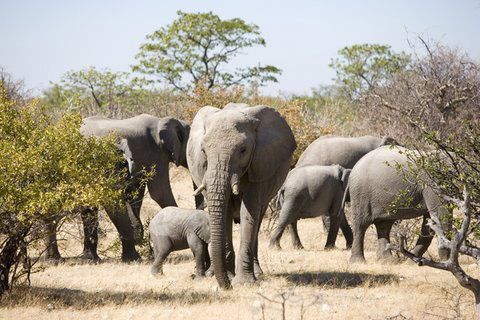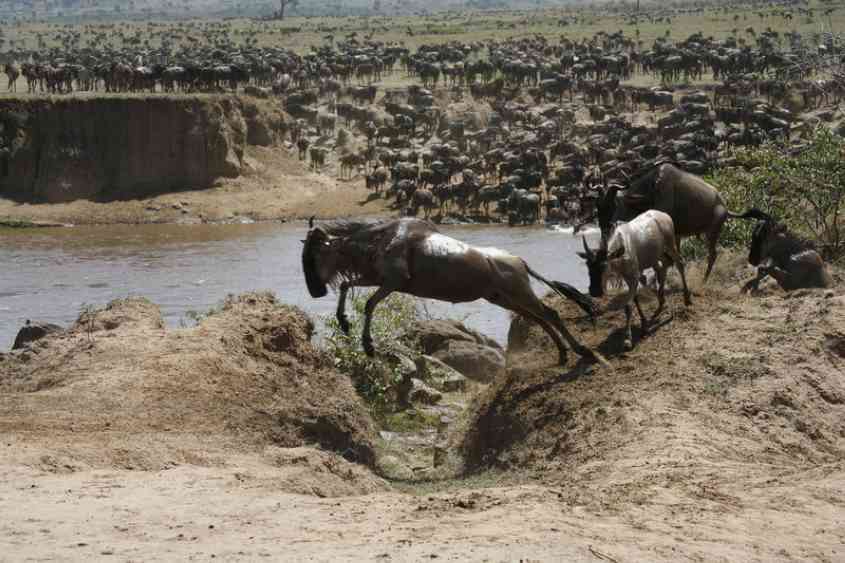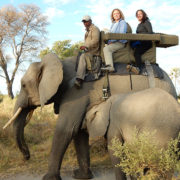How to See the Last Great Herds of Elephants in Africa
If you want to see African elephants in the wild, there’s no better place than Hwange National Park, home to 45,000 of them, one of the continent’s highest concentrations of the animals. Roughly the size of Connecticut, Zimbabwe’s largest park employs strategically placed, manmade waterholes to sustain the elephants, especially during June to November’s dry season.
It’s common to see a family of 50 to 80 elephants lumbering across the savanna to a waterhole, the young calves keeping pace by twisting their trunks around their mothers’ tails. At the water’s edge, the herd fans out, drinking, then spraying their backs with the cooling mud. Since the calves lack full trunk mastery, the youngsters tend to hose the air before rolling in the muck to cool down. Soon after one herd departs, another group arrives, and if Cape buffalo or other animals head to the waterhole, the elephants shoo them away.
 William S. Liebman
William S. Liebman Zimbabwe Hwange Linkwasha Elephants,
You don’t have to go far to get to these waterholes — all the best safari camps have designated spots by them, typically in view of the dining area and tents. In other words, you can wake up to sound of elephants splashing and in the cool of late afternoon, have cocktail hour while watching the herds gather within field goal distance.
Outfitters use a portion of your safari fees to assist with park upkeep and to maintain the pumps. In other words, your dollars help to preserve Hwange’s elephants as well as the park’s more than 100 other mammal species in their natural habitats.
The only thing you won’t find in Hwange are crowds, especially if you stay on private concessions where the tent counts tend to a modest six to nine. On game drives, you rarely see other vehicles, a fact that makes your Hwange wildlife encounter personal and powerful. Visit now, before Zimbabwe, an under-the-radar safari destination, gains more exposure, and thus, more adventurers. The best time to explore is the dry season.
Get There:
Airport: Fly into Victoria Falls International Airport, Victoria Falls, Zimbabwe. South African Airways, British Airways, Qatar Airways and Air Zimbabwe are among the airlines servicing the $150 million dollar facility that debuted in December 2015. More airline service is expected.
Where to Stay:
Linkwasha Camp: This modern, upmarket camp fronts two waterholes, making it easy to watch the elephants and other animals gather while dining during daylight. Nine tents feature en suite bathrooms as well as air conditioning plus heating, nice for those chilly 6:00 a.m wake-ups.
Davison’s Camp: More modest and less expensive than Linkwasha, Davison’s Camp also faces a waterhole. The camp has nine tents with en suite bathrooms.
Little Makalolo: This camp overlooks a waterhole and has six tents with en suite bathrooms. The camp is typically booked by safari companies for their group departures
Wilderness Safaris, which operates Linkwasha, Davison’s, and Little Makalolo, books lodging only through travel agents. Darren Humphreys, owner of Travel Sommelier, books Wilderness Safaris’ trips as well as other safaris.


 Creators Syndicate
Creators Syndicate Travel Tips and Trips
Travel Tips and Trips Physician's Money Digest
Physician's Money Digest Frommers.com
Frommers.com Dentist's Money Digest
Dentist's Money Digest Dentist's Money Digest
Dentist's Money Digest